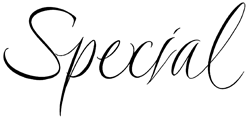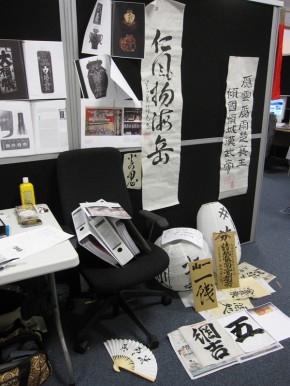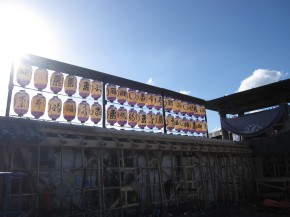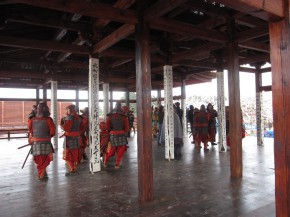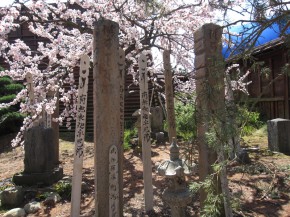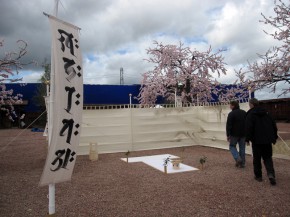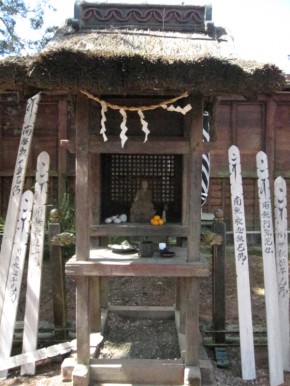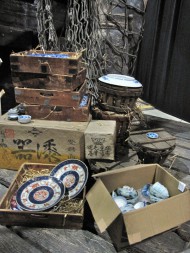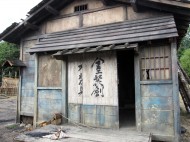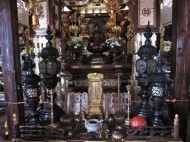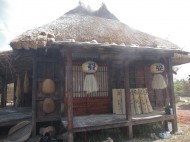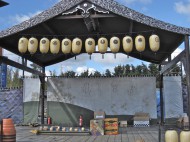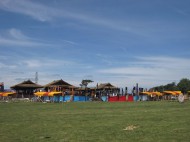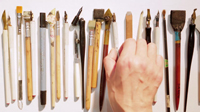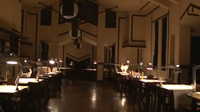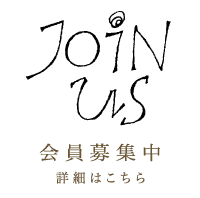This is a story about my experience when I worked for the film production of 47 Ronin from January to July 2011.
I had a phone call from a member of staff in the film production team who asked me to join them on their set decoration team for six months. At that time, I was employed by a small company so at first I declined the offer, but they called me again the following week. Fortunately I could be a freelancer because I've got my residential visa. I decided to resign my job and join them.
I worked for the Shepperton Studio, the sister studio of Pinewood where all the 007 and other big films were shot. They are both located west of London, near Heathrow Airport, and I live in east London. Travel took two hours by train. I also worked in Budapest, Hungary for ten days where some of the sets were located.
The work routine was quite similar to normal office hours. It started at 8 a.m. and finished at 6 p.m. with an hour for lunch and frequent tea breaks, but there were some days when I had to stay late (until 9-10 p.m.) or work through weekends. There was a very clear hierarchy in the production. The employer was the film production company who employed a group of freelancers for this particular production. It seemed that many of the staff had personal connections to each other, or often had worked together in the past.
My desk at office: Pinning some writing and references started conversations with my colleagues and bosses.
Lanterns for Kira: I even dreamt about these purple lantern...
Lower left to right
The pillars of the temple: We covered those pillars with silks with the Buddhist prayers written on.
Asano grave yard: One of the things I had to deal with quantity was these wooden plates, ‘sotohba’. Model-maker made these grave stones from plaster after digitizing my handwriting.
My main job was to be a teammate of the set decoration team and write letters in the style of Edo era, translate them and understand what they are, so that I can explain them to non-Japanese colleagues. Materials varied from paper to all sorts of fabrics and woods. Also, I used not only Japanese sumi-ink, but paints too. I also wrote on small things like tiny labels, boxes, or books, as well as larger things such as eighteen-foot banners and shop signs on doors, etc. Almost everything I did everyday was a new experience and challenge.
The biggest quantity I had to deal with was the shipping containers and lanterns. For the containers, I had to write and stencil over the uneven surface similar to a straw mat. And for the lanterns I wrote letters onto them directly with paint. I had never dreamt that it would be so hard to make a decent line on a pleated surface! I felt desperate (and a bit fed up) having to meet a deadline with no one to help me complete this massive task, so I cheekily sneaked my niece’s name or mine onto some. On the other hand, I became fond of working on fabrics. One of my favorites was the six-foot silk banners with Buddhists prayers written on.
Researching became a part of my daily work too. I had to look for the wording to write, the style of things such as scrolls or books, certain kinds of Buddhist prayers and much more. Once I got to know my colleagues, they often asked me to check things we were designing. The way to do seppuku, the lighting system of Kabuki stage, the variety of fans, chopsticks, cosmetics, and also all the religious decorations – Buddhist prayer icons, Shinto shrine decorations, things around grave yards etc. Even the art department, who made all the buildings and worked next to us, asked for my opinion quite often. Fortunately, my family has always been fond of antiques, traditional plays, ancient buildings, and Buddhist statues, so I enjoyed researching and adding to my stock of knowledge.
The setting for the seppuku: I researched how it should be and also made the banners with Sanskrit letters.
The little shrine and the wooden plates (sotohba): I was in charge for dressing the whole thing up with plates and the straw rope.
An 'instructor of calligraphy' may sound somewhat too important, but this also became a part of my work as I got to know people I was working with. Hiroyuki Sanada, who played Oishi, came to join the production way before the shooting started. We often talked and sometimes exchanged opinions as we were the only Japanese on the same floor at that time, and he was interested in things we were making. When it was decided that the actors should take a short Japanese calligraphy lesson to learn how to hold the brush, etc., they chose me as the instructor since they knew me personally.
I showed some examples I collected of handwritten documents from this era as well as some actual handwritten signatures of the 47 ronin. I also showed the actors how samurai warriors should hold and move brushes when they write and the posture they should keep, and we tried them out together. They needed to be able to write their signatures, so I passed some samples of those around. We had a session once in Budapest and another in Windsor Forest, just a day before they shot the scene.
At the first session, Keanu Reeves, who played Kai, stopped and asked me why all those documents and references look so different from each other, and he also wondered if they were all in the same Japanese. He was the only non-Japanese in the main cast. We Japanese have some kind of experience in writing with a brush as part of our education (which I think is terribly important and hopefully will continue in the future) so we all have some images or vague memories of how they look, but Reeves didn’t of course. That difference probably confused him, so I explained a bit more to him separately and tried spending enough time to actually write the letters. The other actors including Tadanobu Asano, who played Kira, and Rinko Kikuchi, who played a witch, also popped in and enjoyed this rare opportunity to try Japanese calligraphy. We spent thirty to forty minutes on this.
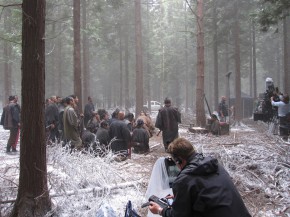
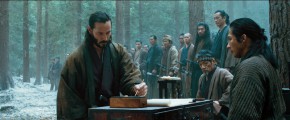
On location: At Windsor Forest, a moment before the shooting started. The atmosphere was very tight.
Signing the blood oath - a screen shot from the film: He picked up the brush with his left hand. I was nervous watching this right next to them.
We had another session at Windsor Forest, but that was just for refreshing their practice of using brushes. We set a foldable table on the slope right next to the shooting location. I showed some documents or samples of signatures again and checked their brush movement. Jin Akanisi, who played Chikara, was not with us at Budapest so that was his first experience. Reeves hadn’t decided which hand he should use. He is left-handed, but he was unsure if he should act as if he is right-handed. Also, as his character is imaginary, there was an issue of deciding which character should be used to write his name. We have three different characters to write our language, Hiragana, Katakana and Kanji (the Chinese characters). Normally we all use Kanji for our names, but what about Kai? The script was in only English so there had never been any Kanji for Kai before. I had a character of Kai as 魁 in my mind and I suggested this. Reeves and Sanada decided to go for it. (In the first script Reeves' name was Hiro but he didn’t like it. I was asked to make new suggestions by Reeves' translator and Reeves picked Kai.)
Sanada and Reeves had obviously done some practice before the shooting. I felt almost sorry we can’t see their writing on a big screen. I was surprised at Reeves especially as he had only had one or two days to practice after we decided to go for Kanji, but his writing was fluent and nicely formed. I was amazed how hard they worked to go further. I was there with them on the shooting day at the forest, looking after the tools and other things.
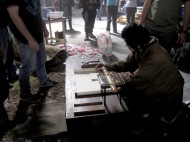


Shooting the close-ups: At the set of the second unit. They reproduced same settings as the main shots―all tools on the chest and costumes.
The blood oath: The ‘legend’ and forty-seven signatures. They were used for close-up shots.
The blood oath scroll with blood marks: It was used for a close-up shooting by the second unit after it was used for the main shooting.
I also did a similar thing with the second unit, who was in charge of close-ups or other individual shots. This time their focus was the actual writing. My ‘students’ were all extra actors whose hands had to represent each of the main casts' and they were all beginners of calligraphy. They gave us two days to learn. I showed similar references and models of each signature and then we had to get on with actual writing. I was there with them while they shot the extra’s hands, too. Is it possible to produce decent calligraphy to be seen on a silver screen after two days practice? But they, non-Japanese shooting crews, would not be able to tell which writing is good enough or not. I tried to talk to one of the directors and we also shot the close-ups of my tip of the brush, without my female fingers in the frame. It was very interesting to see the cameraman trying different lenses, the lighting crew adjusting the lighting each time, and how others such as the make-up crew were working.
Helping to shop for more 'props' became part of my job as well. Way before the shooting started the buyer and designer had been to Japan to buy things which filled our big storage warehouse. These ranged from chopsticks to cupboards or palanquins. But as the shooting went along, we needed more stuff – millions of lanterns for a start, traditional candles, more fans, handles for sliding doors, fabrics for tatami mats. We had to order those from Japanese sellers, so we made phone calls at 6 a.m. in the morning to Japan, myself ordering them in Japanese, with a buyer talking to me in English right next to me. I also did some filing and translation of those receipts or bills.
Set of Dejima: Shipping containers which I worked in the early days were put in the set. The atmosphere was great.
The house of sword maker: The letters were painted directly on the big doors. It was hard to make the right balance and layout.
The inside of the temple: It was not on the film but it is one of my favorite sets.
Everyday there were some problems. I was not good at the job called ‘clear’ which we had to make sure that what I wrote was not touching on any copyright. Most of the time the designer just gave me a very rough idea what to write, so I decided what to say. It was my duty to ‘clear’ those each time. Names of casts, poems, prayers, names of shops… I had to submit the documents that had both Japanese and English to those in charge, then start working after I was given the okay. But I often forgot, then they all had to wait for me to do ‘clearance’. This reminded me of the fact that the characters and letters are in fact, information.
Also, I often wished I could have had someone else who was a Japanese to talk about things. I would have felt much easier and less pressured when I had to decide what to write, if I could have talked about or discussed the art, culture or language (because the speaking and writing language of Edo is completely different to current one).
What I felt on a daily basis was that you need to work as a team. Miscommunication or misunderstanding could often spoil the work you did in days. And I had to be in charge of whatever I was making, to explain them to the other members or bosses (as they can’t read Japanese). On the other hand I enjoyed these hard jobs. You get paid for writing your letters all day long for seven months. At late stages, I almost felt my arms moving by themselves to make the brush strokes. Often those letters were much better than the precisely prepared and designed ones. I could almost say that quantity wins over quality.
It was brilliant to meet other professionals, too. ―Joiners, draftsmen, model makers who could create anything by looking at references, painters who could draw really anything, special effects crew who could make the right amount and kind of smoke or fires, camera people who could control ‘monster’ like 3D cameras and the lighting crew who worked very close to with them. As a film lover and a fellow craftsman, it was my pleasure and treasure to be able to see all these professionals who were trying their best to make one film. Lastly, I learnt that you need to be fit to survive in a busy film studio!
A village house : A porch of tatami mat maker’s house in my most favorite set. I love these lanterns too.
A background screen of the stage: That was the first thing I had to tackle the size but the result was not too bad.
The ‘back-lot’: One of the outside set. There is no letter but I wanted to show the scale.
Everyday there were ups and downs. I started my career as a calligrapher when I came to London in 2001, and had been working in a small studio. More than three hundred people were working on the filmmaking sets and different things were happening every minute. Looking back now, there are things I’m still not sure about the results of what I did. It is a shame the film itself was not commercially successful too. I cannot help remembering that Great East Japan Earthquake occurred on the next day I taught the actors to write in Budapest. But after surviving seven months, with lots of compliments from the professional colleagues, I can say that I have been useful to this project. Someone needs your skill and you do your best – maybe this is what work is all about.
Please have a look at my blog also about the work details or back stage stories.
http://calligraphy47.blogspot.co.uk/
Keiko Shimoda
Born in Hyogo, Japan. She started to learn Japanese calligraphy when she was three years old. After graduating college, she worked for a shipping company for eight years in Kobe till 2000. After leaving her job, she got an apprentice job for one year as a graphic designer and calligrapher at Kirsten Burke Calligraphy Studio, Greenwich, London in 2001. She then started working for Mandalay Wedding Stationery, which Kirsten Burke launched in 2002. She started taking private clients around 2010 and helping other professional calligraphers in London. In 2012, she worked as a Japanese calligrapher for the film 47 Ronin for seven months. Since then, she has worked on commission for filmmaking on several occasions. Films she was involved in include Skyfall and Alice Through the Looking Glass. She now works as a freelance Japanese and alphabet calligrapher in London. Clients include Mulberry, Burberry, Jimmy Choo, Claridge's, Christie's and more. A member of SSI (Society of Scribes and Illuminators) and a committee member of SLLA (South London Lettering Association).
Keiko Shimoda's website:http://www.j-wcalligraphy.co.uk/
Kirsten Burke: http://www.kirstenburke.co.uk/
